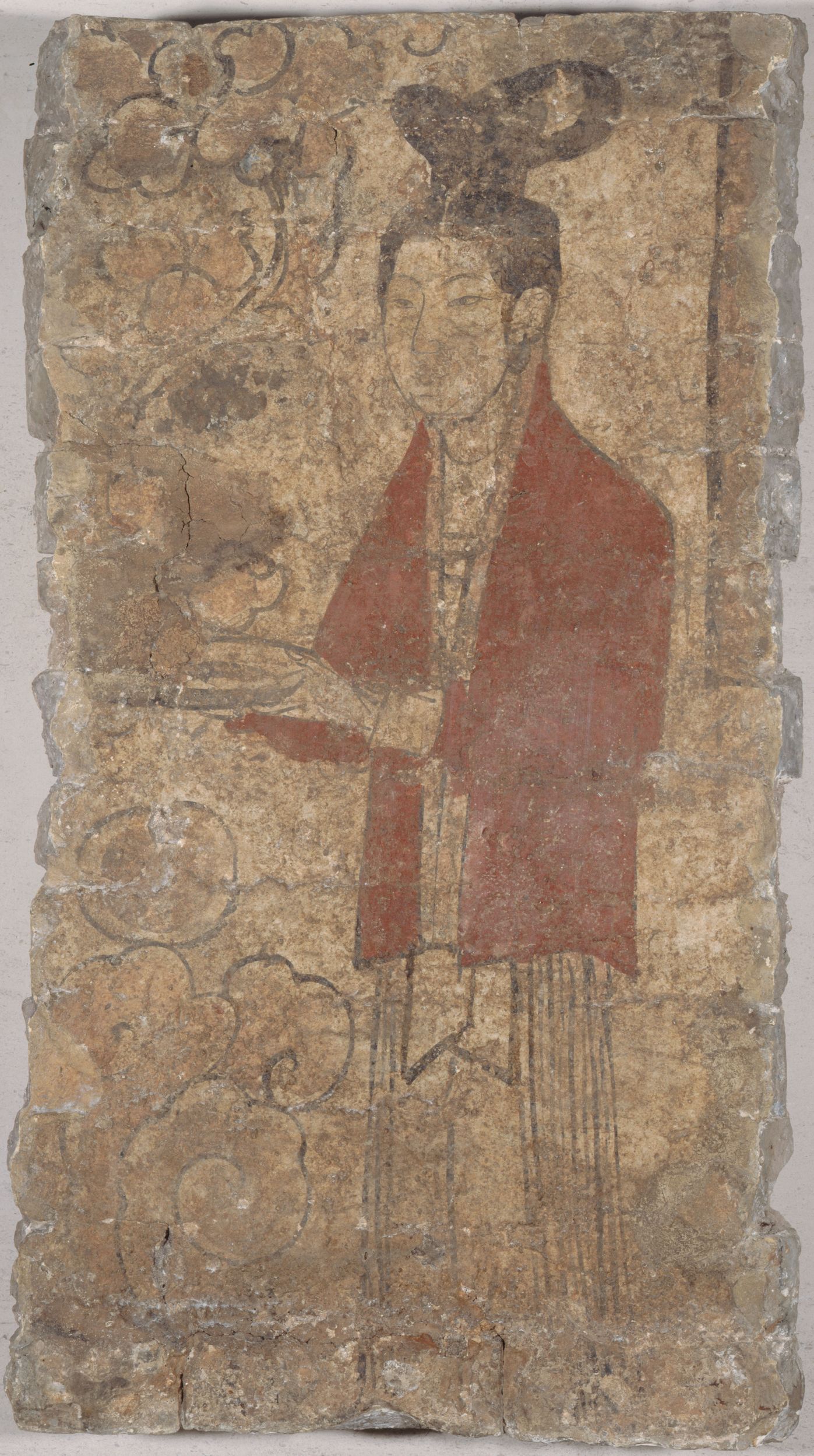
Porteuse d'offrande
Terre, Couleurs - Pigments
Peinture murale
Achat
M.C. 9259
A young woman is depicted as if on a panel, which is delineated on the right by a vertical red line and on the left by swirling clouds. The woman is shown standing in a three-quarter pose, turning to the left. She must be a servant because she holds a shallow dish in her hands.
Her hair is pulled up into a high chignon forming a double loop at the top, leaving only a lock at each temple in front of the ear. This drawn-back hairstyle exposing the face contrasts with that worn by Chinese women in the same period (Liang, 1998, p. 54, ill. 5), which was more voluminous and framed the face. The woman in the painting wears a ring in her left ear. The wearing of earrings was a characteristic of the Liao that greatly surprised the Song emissaries. In his Lu zhen cheng yao lü shu zheng, Jia Jingyan records that the empress wore jade earrings and her ladies-in-waiting gold earrings (Wu, 1991, p. 67). The slim figure in the painting wears a red straight jacket with lapels over a pleated robe, and a long scarf.
This costume appears several times in wall paintings in the Xuanhua tombs, apparently worn by both Chinese and Khitan women (Zheng, 1997, p. 114, ill. 8: tomb dated 1093, woman carrying the bowl on the left; p. 119, ill. 15: same tomb: woman with mirror on the left).
The left part of the panel has gaps that make it difficult to identify the content. The cloud swirls could be interpreted as a stylised plant motif, although this form of abstract depiction is rare under the Liao.
This fragment may have been part of an ensemble along with another element in the Cernuschi Museum (M.C. 9258: Chine, des chevaux et des hommes, 1995, p. 88), depicting a young woman holding a pipa. Two other comparable fragments originally from the Lionel Jacob Collection are in the Musée d’Art et d’Histoire de Saint-Denis (idem, pp. 86 and 87). These four panels were part of the Vignier Collection in the early 20th century and may belong to the same funerary ensemble.
Liang, Zi, « Liao dai cha wenhua de tese » (Les caractéristiques de l’art du thé à l’époque des Liao), Gugong Wenwu Yuekan, vol. 16, n°3 (n°183), 1998
Wu, Yuhuan, « Lue lun Liao dai qidan ren de yi shi zhu xing » (Aperçu de la manière dont les khitan s’habillaient, mangeaient, se logeaient et se déplaçaient à l’époque des Liao), Beifang Wenwu, n°3, p. 66-71
Zheng, Wenlei (éd.), A Journey into China’s Antiquity, Pékin: Morning Glory Publishers, 1997
Gilles Béguin (dir.), Art de l’Asie au Musée Cernuschi, Paris Musées / Findakly, 2000, p.124-125.